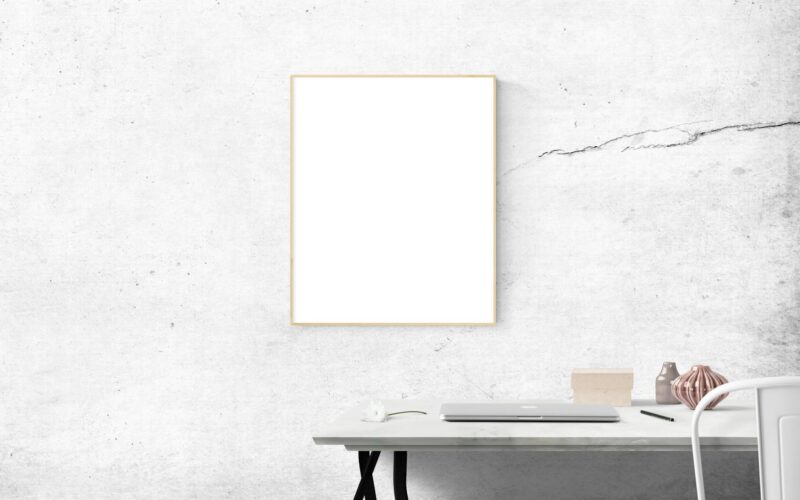Understanding Digital Overload
In today’s fast-paced digital world, we find ourselves constantly connected to devices: smartphones, tablets, laptops, and wearables are integral to our daily lives. This omnipresence of technology fosters a unique form of overload, characterized by an incessant stream of notifications, social media updates, and emails vying for our attention.
Digital overload manifests in several ways, including mental fatigue, anxiety, and decreased productivity. Studies indicate that excessive screen time can lead to diminished attention spans and hinder our ability to engage in deep thinking. Recognizing these signs is often the first step toward implementing a digital detox. Emphasizing the importance of tech-free time, experts now advocate for “unplugging” as a means to reclaim focus, fostering creativity, and improving mental well-being.
One prevalent issue is the diminishing quality of face-to-face interactions. Instead of connecting through screens, creating genuine conversations allows us to engage and understand one another better. The paradox of choice is another facet of digital overload; the endless selection of content can lead to decision fatigue, preventing us from enjoying what we have on our screens.
As the first step toward a successful digital detox, it is essential to assess your current relationship with technology. Reflect on how many hours you spend on devices, what triggers your usage, and how it affects your mental state. With this awareness, you can begin to formulate a strategy for effective unplugging.
Setting Boundaries: Find Your Tech-Free Zones
Creating clear boundaries around technology use is vital for a successful digital detox. As the saying goes, “Out of sight, out of mind.” This principle plays a crucial role in establishing tech-free zones in your daily routine.
Consider designating specific areas in your home—such as the bedroom, dining room, or home office—as device-free zones. By enforcing these boundaries, you promote healthier habits and encourage meaningful interactions. For instance, leaving devices outside the bedroom helps foster better sleep hygiene. Blue light emitted from screens can interfere with melatonin production, disrupting sleep patterns and diminishing overall health. Establishing a device-free hour before bedtime can significantly improve your sleep quality.
Moreover, consider implementing a schedule for technology use. For instance, allocate specific times for checking emails or scrolling through social media. This method can help combat the compulsive nature of device engagement. Aim to limit technology use during meals and significant family moments, enhancing the emotional connections within your relationships.
You might also employ the “airplane mode” trick. When engaging in activities that require focus—like reading, studying, or engaging in hobbies—switch your devices to airplane mode or turn them off entirely to minimize distractions. Flexibility in these boundaries is essential; be mindful of what works for you and adjust accordingly to strike a balance between connectivity and a technology-free existence.
Exploring Alternative Activities: Rediscovering Hobbies
One of the most liberating aspects of a digital detox is the chance to rediscover hobbies and interests that may have been sidelined due to digital distractions. Exploring alternative activities not only draws you away from screens but also helps re-engage your creative and imaginative faculties.
Start by making a list of hobbies you once enjoyed. This could include painting, writing, gardening, playing a musical instrument, or learning a new language. Rediscovering these activities brings joy and cultivates a sense of achievement. Moreover, being engaged in creative pursuits can enhance brain function, improve emotional well-being, and reduce stress.
Consider outdoor activities that connect you with nature, such as hiking, biking, or simply taking a leisurely walk. Nature has been shown to improve mood, enhance cognitive function, and lower stress levels. The concept of “forest bathing” or spending time in nature, has gained popularity for its therapeutic effects, allowing you to unplug from digital demands while immersing yourself in a serene environment.
Physical fitness is another rewarding alternative. Engaging in activities like yoga, dance, or team sports encourages physical movement and promotes camaraderie, which can also mitigate stress. Establishing a routine around physical activities encourages balance, better health, and a supportive community, further enhancing your overall well-being during a digital detox.
Mindfulness Practices: Cultivating Presence
Engaging in mindfulness practices forms an integral part of a digital detox. Mindfulness is the act of maintaining awareness of the present moment without judgment. In an age dominated by distractions, cultivating this practice can help break the cycle of compulsive device use, allowing for deeper personal connections and self-discovery.
Meditation is a powerful tool for mindfulness, offering numerous benefits for mental clarity and reduced anxiety. Even dedicating a few minutes each day to meditation can improve your overall emotional state. In the absence of technology, consider guided meditation apps but ensure your device use is strictly limited to this purpose.
Gratitude journaling is another effective mindfulness technique. Setting aside a few moments daily to reflect on aspects of your day can help shift your focus from digital noise to appreciating the simplicity of everyday life. Writing down three things you’re grateful for can foster a more positive mindset, making it easier to navigate through challenges.
Additionally, practicing deep breathing exercises can assist in grounding oneself whenever the temptation to reach for a device arises. Focusing on your breath can bring awareness back to the present moment, reducing anxiety and creating a sense of calm.
As you embrace mindfulness practices, you may find that the urge to check your devices diminishes. This newfound presence enriches your experiences and interactions, maintaining a clear boundary between the digital and physical worlds.
Establishing a Balanced Digital Diet
Just as we must be mindful of what we consume in terms of food, the same principle applies to our digital habits. Establishing a balanced digital diet is essential in overcoming the negative impacts of excessive technology use.
Begin by assessing your media consumption and being selective about what you engage with. Opt for quality over quantity; choose content that motivates, educates, or inspires you. This can vary from engaging articles, educational podcasts, or uplifting documentaries. The goal is to reduce the time spent consuming trivial content that often leads to mindless scrolling or binge-watching.
Regularly declutter your digital life. Unsubscribe from newsletters that no longer serve your interests, unfollow social media accounts that don’t contribute positively to your well-being, and delete apps that prove distracting or unproductive. This method not only reduces screen time but also creates a focused online environment aligned with your values.
Moreover, it’s essential to identify devices that contribute positively to your life. Use these devices as tools for personal growth, learning, and social interaction while being cautious of their addictive qualities. Periodically review and adjust your digital diet to ensure it aligns with your evolving interests and goals. Adopting a balanced digital consumption approach will ensure that technology remains a beneficial tool rather than an overwhelming burden, enhancing your overall life quality.
By following these guidelines on unplugging and unwinding, you can successfully navigate the digital landscape and emerge with a healthier relationship with technology.
Understanding the Impact of Social Media
Social media platforms have revolutionized the way we connect, share, and communicate. However, their pervasive nature can often lead to feelings of inadequacy and anxiety, especially through comparison. The constant exposure to curated lives can distort our self-perception and foster envy, resulting in negative emotional outcomes. Moreover, the addictive design of these platforms, with likes and notifications triggering dopamine responses, can create a compulsion to engage, leading to screen time that extends far beyond intended use. To mitigate the negative effects of social media, it’s essential to tailor one’s usage consciously. Limiting time spent on these platforms, curating your feed to include content that uplifts instead of depleting, and understanding the importance of social media breaks can significantly enhance mental well-being.
Cultivating Digital Literacy
In a world saturated with information, cultivating digital literacy is paramount. This encompasses not only the ability to effectively navigate technology but also to discern credible sources from misinformation. The capacity to evaluate the reliability and relevance of the information encountered online is an essential skill that bolsters informed decision-making. Engaging in courses or workshops focused on digital literacy can aid individuals in developing critical thinking skills. Furthermore, being aware of one’s emotional responses to digital content allows for reflective consumption rather than reactive engagement. Developing a critical consciousness helps in navigating the complexities of the digital space, ensuring that technology serves as a tool for empowerment rather than overwhelm.
Reconnecting with Nature: The Digital Detox Retreat
Engaging fully with nature acts as a counterbalance to digital overload. Many individuals are opting for digital detox retreats, immersing themselves in natural environments away from their screens. These retreats focus on holistic wellness, combining mindfulness practices with outdoor activities such as hiking, biking, or yoga. This reconnection with the natural world fosters mental clarity, emotional balance, and a sense of tranquility. By temporarily detaching from digital distractions, individuals can experience the therapeutic effects of nature, leading to increased awareness and appreciation for the present moment. Such retreats encourage introspection and self-discovery, enhancing the benefits of an extended digital detox.
Prioritizing Sleep Hygiene in a Digital World
Sleep hygiene is intricately connected to our digital habits. Quality sleep is essential for mental and physical well-being, yet excessive screen time, particularly before bed, can disrupt sleep patterns. Blue light emissions from devices suppress melatonin production, making it challenging to fall asleep and stay asleep. Establishing a pre-bedtime routine free from screens is crucial for fostering a restful night’s sleep. This may include activities such as reading a physical book, meditative practices, or light stretching. Prioritizing sleep hygiene contributes to overall health, increasing productivity and emotional resilience in the face of daily challenges. Simple changes, such as setting curfews for device usage or utilizing blue light filters, can significantly enhance sleep quality.
Embracing Technology Mindfully: Tools for Productivity
While the article emphasizes unplugging, it’s equally important to recognize that technology can also serve beneficial purposes when used mindfully. Employing productivity-enhancing apps and tools can help manage time effectively and foster a more organized lifestyle. Techniques like the Pomodoro Technique, focus timers, and task management software can facilitate concentrated work periods, minimizing distractions. Implementing mindfulness practices during tech use—such as setting intentions for usage—ensures that technology supports, rather than hinders, progress towards personal goals. By consciously integrating productivity tools, one can navigate the digital space constructively, leading to greater efficiency and satisfaction in daily tasks.
Summary:
In an age dominated by digital devices and constant connectivity, understanding and addressing the challenges of digital overload has become essential for maintaining mental health and wellness. The impact of social media on self-esteem and emotional stability cannot be overstated, necessitating informed usage and breaks when required. Cultivating digital literacy ensures that individuals can discern valuable information from noise, enabling a healthier relationship with technology. Reconnecting with nature through digital detox retreats provides a refreshing escape and therapeutic benefits that enhance mental clarity and emotional well-being. Prioritizing sleep hygiene plays a pivotal role in navigating the digital landscape, while embracing technology mindfully can enhance productivity rather than impede it.
By following these guidelines, we can foster a balanced coexistence with technology that enriches our lives instead of overwhelming us.
Finding harmony between our digital and physical worlds is key to improving mental clarity and well-being in today’s fast-paced society.
#Unplugging #Unwinding #Tips #Digital #Detox
















